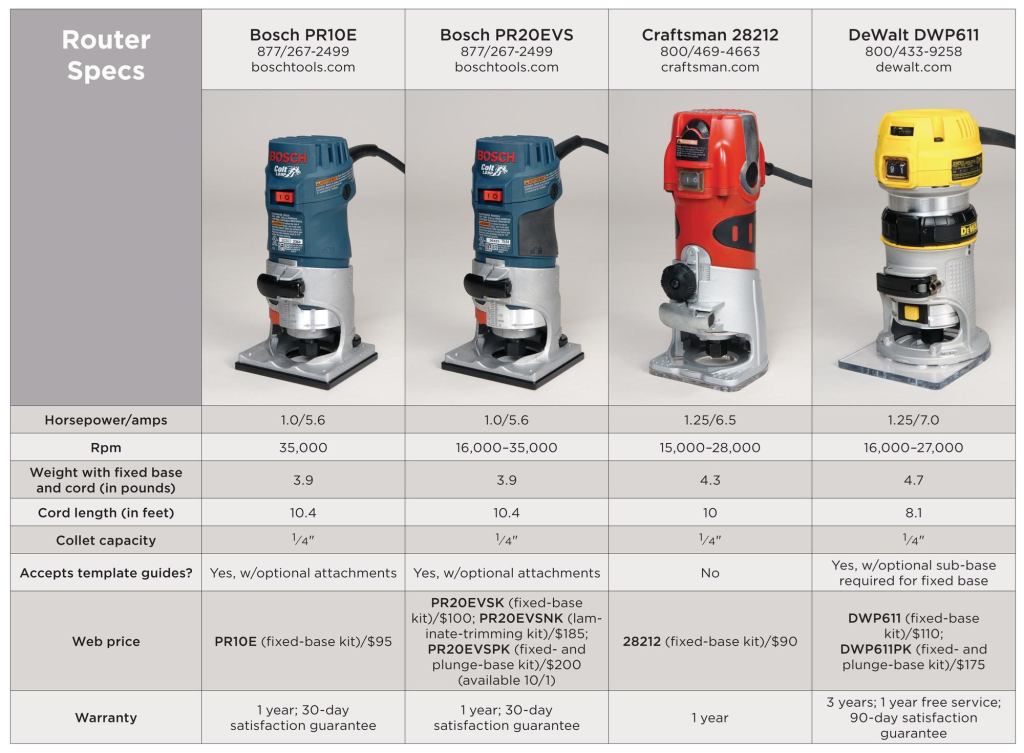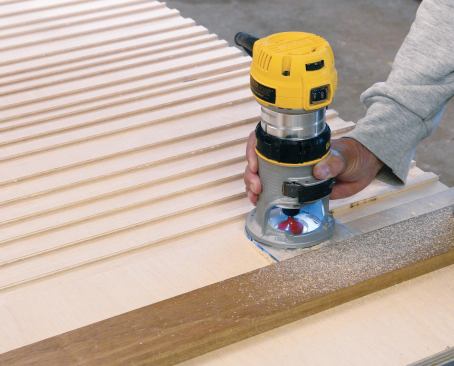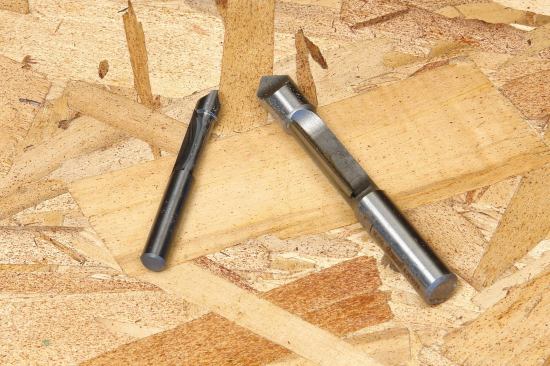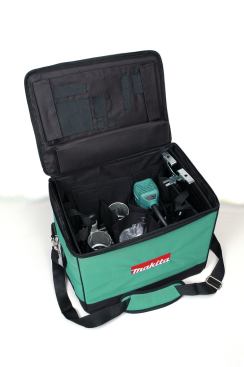Makita RT0700C
Tim Uhler
The author likes compact routers for light-duty, one-handed ope…
This new model is Makita’s first compact, drawing 2.1 amps more than the company’s most powerful laminate trimmer. The tool’s variable-speed motor is smooth and powerful, and looks and feels like it’s built for the long haul. You can use either two opposing wrenches or a spindle lock and one wrench to install or remove bits.
The basic kit comes with a fixed base, a 1/4-inch and 3/8-inch collet, an edge guide, a template guide, a dust nozzle, and two wrenches. The complete kit comes in a huge soft but rigid case and includes fixed and plunge bases, a tilt base, and an offset base, as well as dust nozzles and template guides for the fixed and plunge bases and other odds and ends. The full kit allows you to mix and match. For instance, you can remove the large sub-base from the offset base, screw one of plunge-base handles to it, and put the whole thing on the fixed base to add stability on wide workpieces.
The tilt and offset bases do their jobs, but the plunge base could use some refinement. For starters, the threaded depth rod on the one I tried was a chore to adjust, and the plunge lock lever was hard to reach and tighten, springing open while I routed a dado. Swapping bases couldn’t be easier, though; open their clamping levers and the motor simply slides in or out.
The freewheeling rack-and-pinion depth-adjustment wheel on the fixed and tilt bases isn’t very helpful. Also, you can turn on the switch easily by just swiping your finger over it, which makes me nervous. And there’s no LED work light. An intriguing optional accessory is the #194579-2 guide rail adapter, which lets you use the plunge base with Makita’s guide rails.
Porter-Cable 450
Porter-Cable and DeWalt are both Stanley Black & Decker brands, which explains why their fixed and plunge bases are functionally identical and why they offer the same two kits and range of attachments. But unlike the DeWalt, the Porter-Cable is a single-speed model with no LED work lights. Also, the DeWalt fixed base has a D-shaped sub-base that doesn’t accept template guides, while the Porter-Cable has a round sub-base that does (though both sub-bases are sold as accessories). Unless you always use small bits and never work in dim light, why buy the Porter-Cable?
Ridgid R2401
The lightweight variable-speed Ridgid is less powerful than the 1-1/4-horse models, but it has a smooth motor with a gentle startup, one LED work light, and clear sub-bases. It also has a unique bump switch up top that I really like; you pull it up to turn it on and just hit it with your free hand to turn it off, which is much faster and easier than fumbling with a rocker switch. The switch also lets you verify at a glance that the tool is turned off before you plug it in.
To adjust the cutting depth, you open the clamping lever, press and hold a second lever above it, and slide the motor where you want it. To fine-tune, you let go of the top lever and turn the micro depth-adjustment wheel before closing the clamping lever. You can swap bits with two wrenches or with the spindle lock and one wrench, but only the two-wrench method can be done easily without removing the base. Thanks to a motor retention spring, removing the base is a hassle.
The tool comes in a little kit that includes a round and square sub-base, an edge guide, two wrenches, a 1/2-inch straight bit, and an 8-inch-square by 4-inch-deep soft case. The R2401 doesn’t accept template guides or hook to a vacuum, and no other attachments are available.
The Bottom Line
The one-horse and 1-1/4-horse compacts seem like two separate categories, because the latter are noticeably more powerful. My overall favorite is the variable-speed 1-1/4-horse DeWalt. It delivers strong, even power at various speeds; offers a fixed and a plunge base that are both first rate; has dual LED work lights and clear sub-bases for excellent visibility; and provides a full range of optional attachments.
I wouldn’t buy either of the single-speed models I tested, because the variable-speed ones are more versatile and easier to control. The best choice for you, however, depends on the work you do.
Bruce Greenlaw is a JLC contributing editor.




